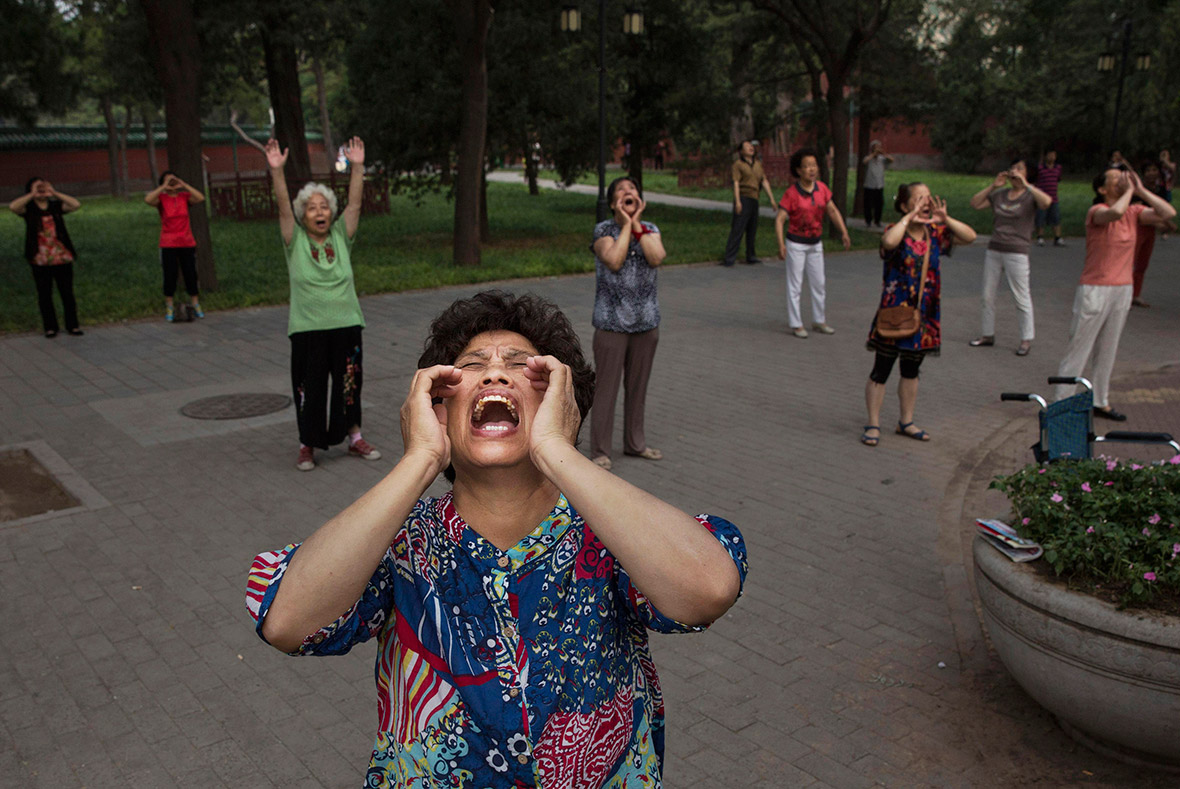Beijing's Ritan Park: Images of a little urban oasis with a whole lot of life
The park serves as a garden, gym, dance floor, rehearsal studio, prayer venue and place to socialise with friends and loved ones.
In the heart of Beijing's urban sprawl lies a much-needed area of green space. Ritan Park offers locals a brief respite from the pace of city life and the notorious air pollution. While the park has secluded spots where people can relax, meditate and sleep, other areas are less tranquil. For the locals, the park serves as a garden, gym, dance floor, rehearsal studio, prayer venue and place to socialise with friends and loved ones.
Award-winning Getty photojournalist Kevin Frayer spent four days in this urban oasis, capturing park life, Beijing-style. He told IBTimes UK: "It's my neighbourhood park and in a city that can sometimes feel like one big piece of endless concrete, it is an oasis for so many of the Beijingers that find respite there. The park is so full of wonderful characters and brimming with atmosphere, from the early morning until the late evening. It changes by the hour, and at almost every turn there is something different happening and something new to see."
People flock to the park in the mornings to exercise, perform martial arts manoeuvres, rehearse dance routines and sing folk songs. People also come to the park to practise more unusual activities deriving from traditional Chinese medicine, such as shouting loudly to help regulate breathing and scratching their bare chests against trees, which is believed to help stimulate the blood flow and relieve aches and pains.





















Ritan, meaning 'sun altar', is one of the oldest parks in Beijing, having been built in the early 1500s during the Ming Dynasty for an emperor to make sacrifices to the Sun. It's a fairly small park, covering an area of 21 hectares, or 210,000sq metres (London's Hyde Park has an area of 142 hectares). Situated in Beijing's embassy area, the park is surrounded by some of the world's most expensive apartments, but many poorer people live in state-controlled flats in the area.
Parks such as Ritan are hugely popular because China's rapid urbanisation means that most people live with their extended families in small apartments with no gardens – and no privacy. In 1990, just 26% of Chinese people lived in cities; today more than half of China's population live in urban areas. This is expected to soar to 70% by 2030, as the Chinese government demolishes rural settlements and builds megacities to house the former villagers.
China's population is also ageing thanks to better healthcare and the country's one-child policy. By 2050, one in every three Chinese people is forecast to be over 60 years old. Elderly people flock to Ritan Park to use the open-air exercise equipment and perform tai-chi and traditional folks arts such as Chinese opera. More adventurous pensioners try their hands at Western pursuits such as disco, swing and ballroom dancing.







Frayer told us: "Many of the regulars are older and it is as much about socialising as it is about exercise. Dancing, kicking, singing, stretching, shouting and slapping – there are endless possibilities as to how one can get fit at Ritan Park. It's just really nice to see so many people out enjoying themselves."
In the evenings, younger people stop off in the park on their way home from work to socialise with friends or to find a secluded spot to spend time with a loved one away from their families' prying eyes.





Frayer told IBTimes UK that his favourite thing about Ritan Park is the people. "It's an extraordinary place to people watch, to soak up the real Beijing. This is not how most people imagine Beijing, with its reputation for outrageously bad air quality, but the city is full of amazing parks like this," he said. "When the sun is shining and the strong north wind brings fresh clean air to the city, you can see the mood of people lift. It's a reminder of how precious it all really is."
© Copyright IBTimes 2025. All rights reserved.






















